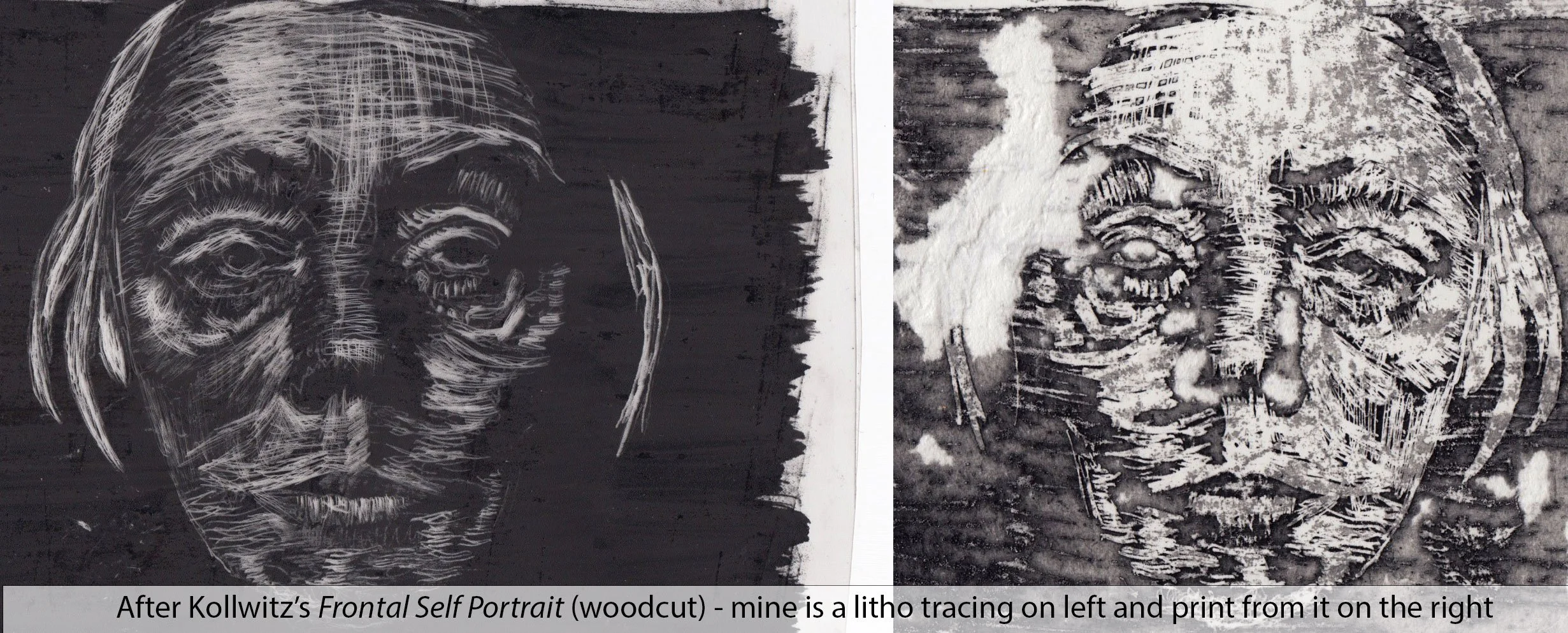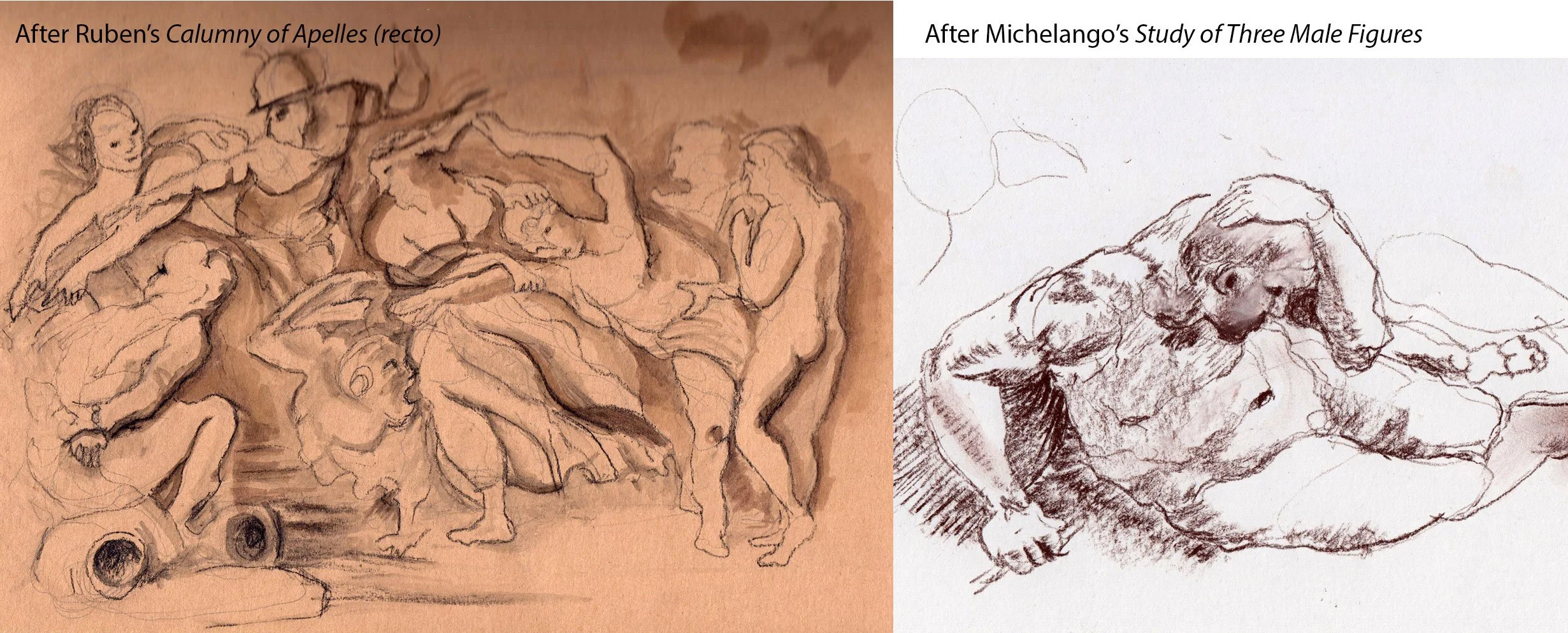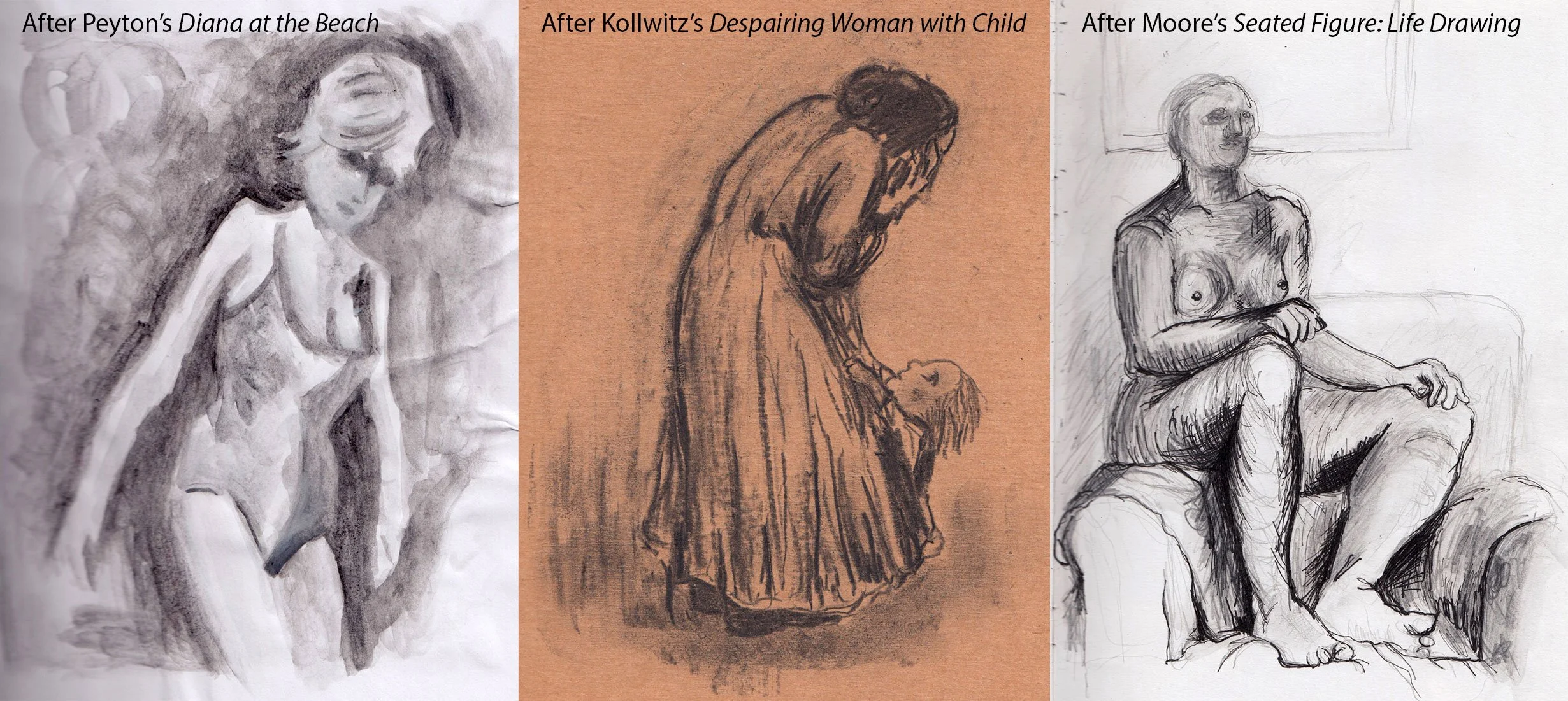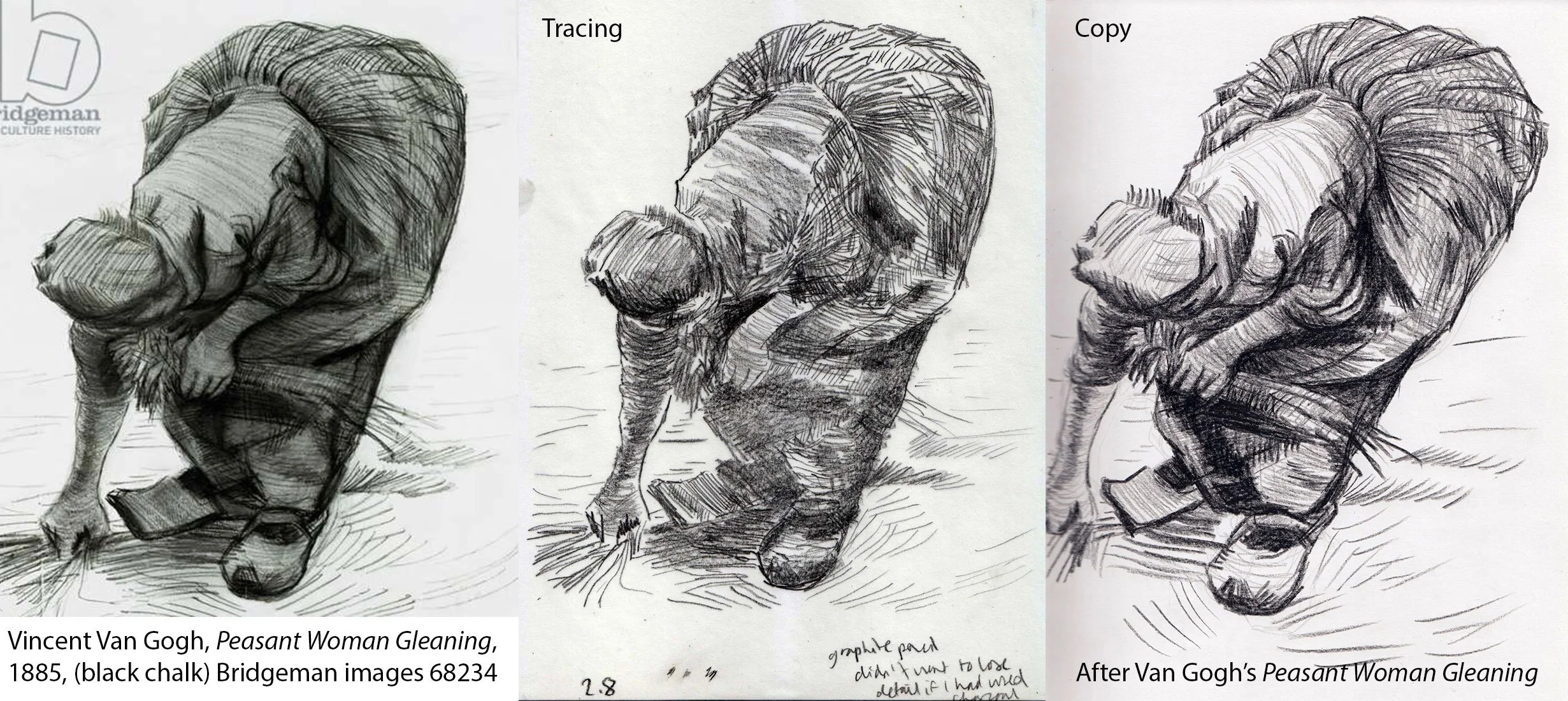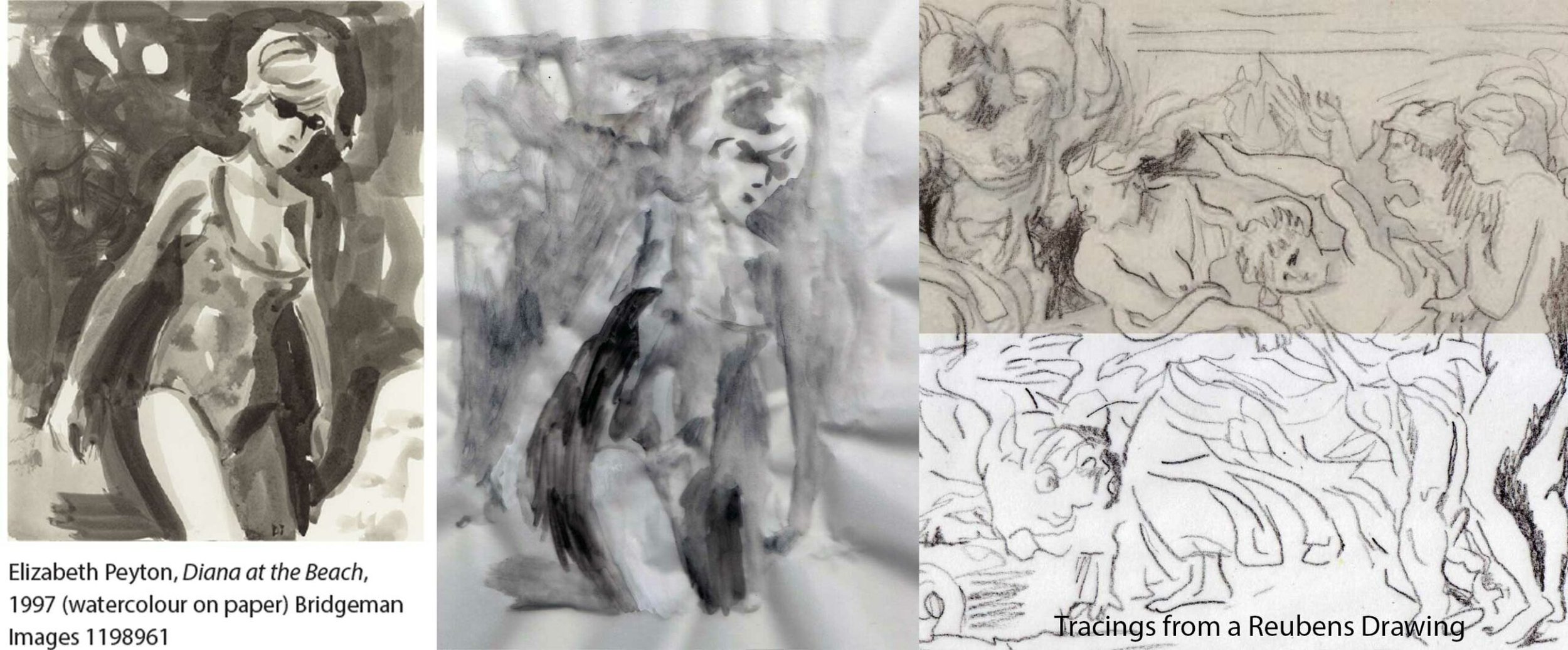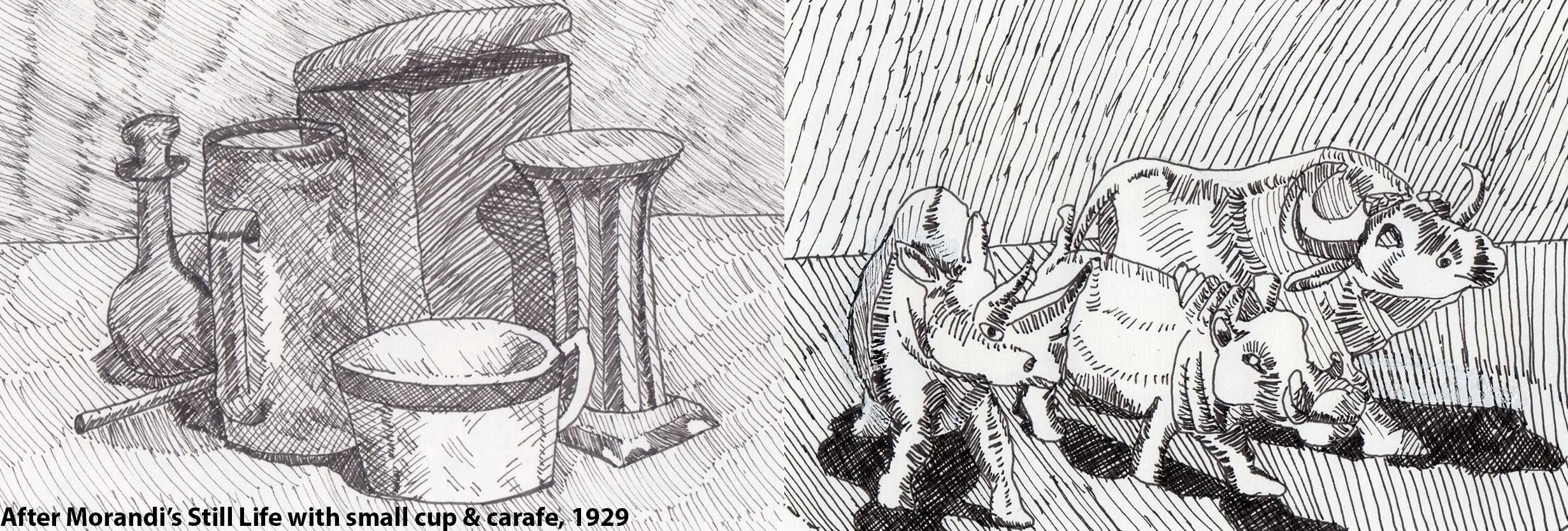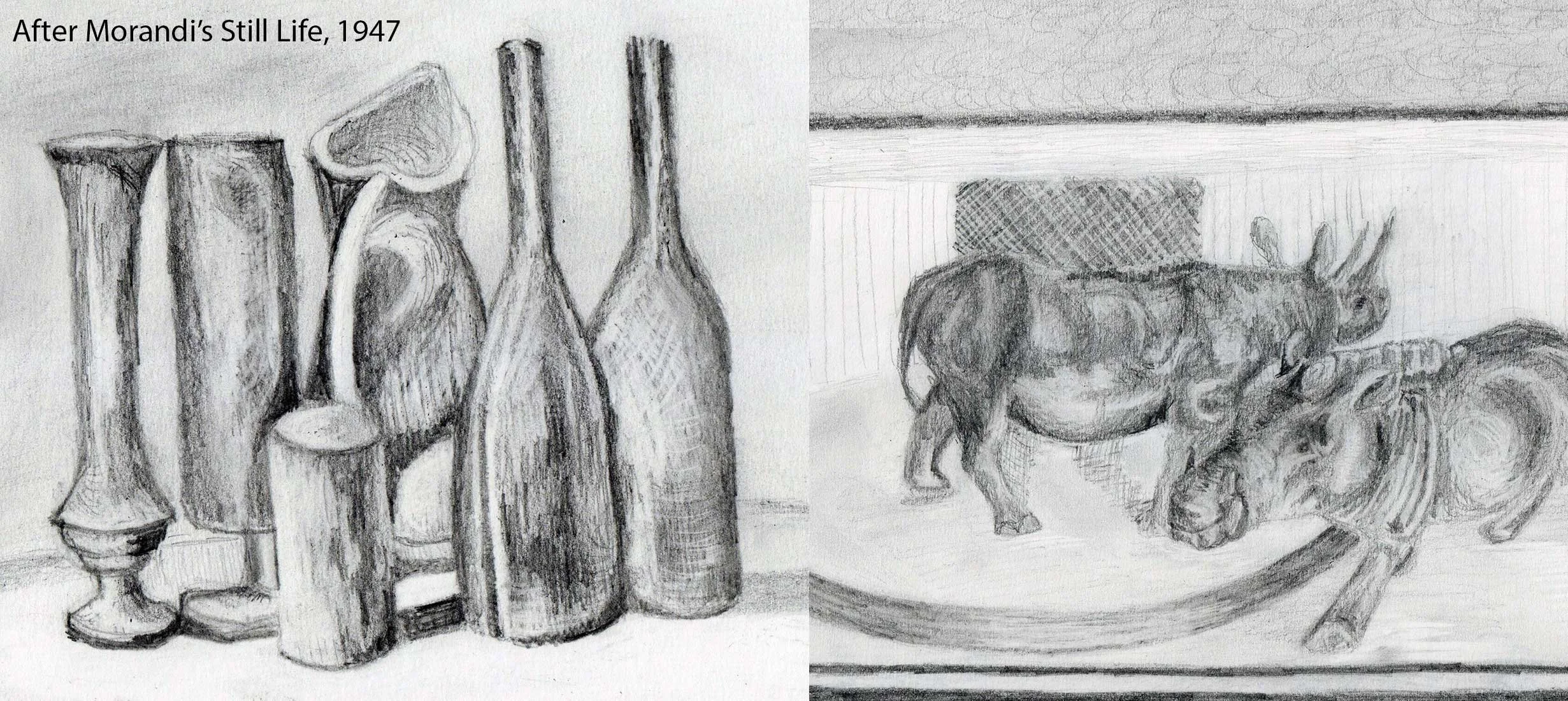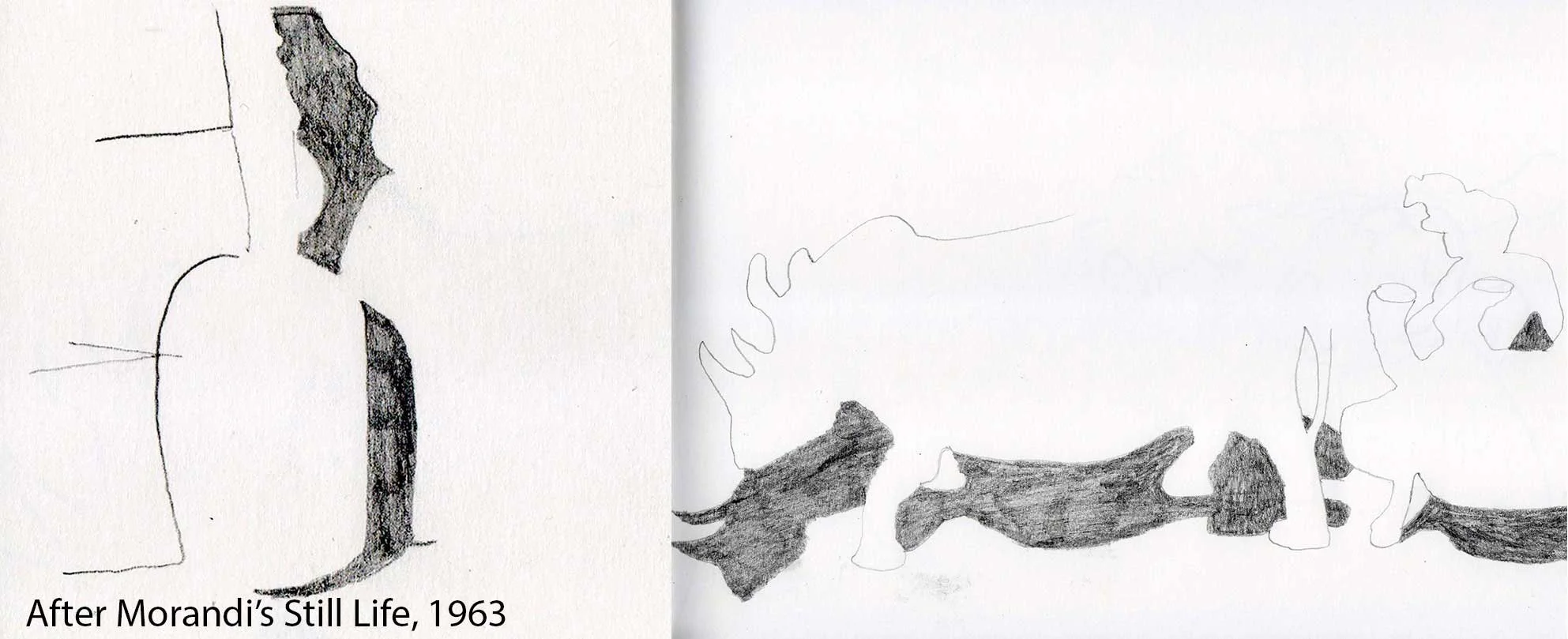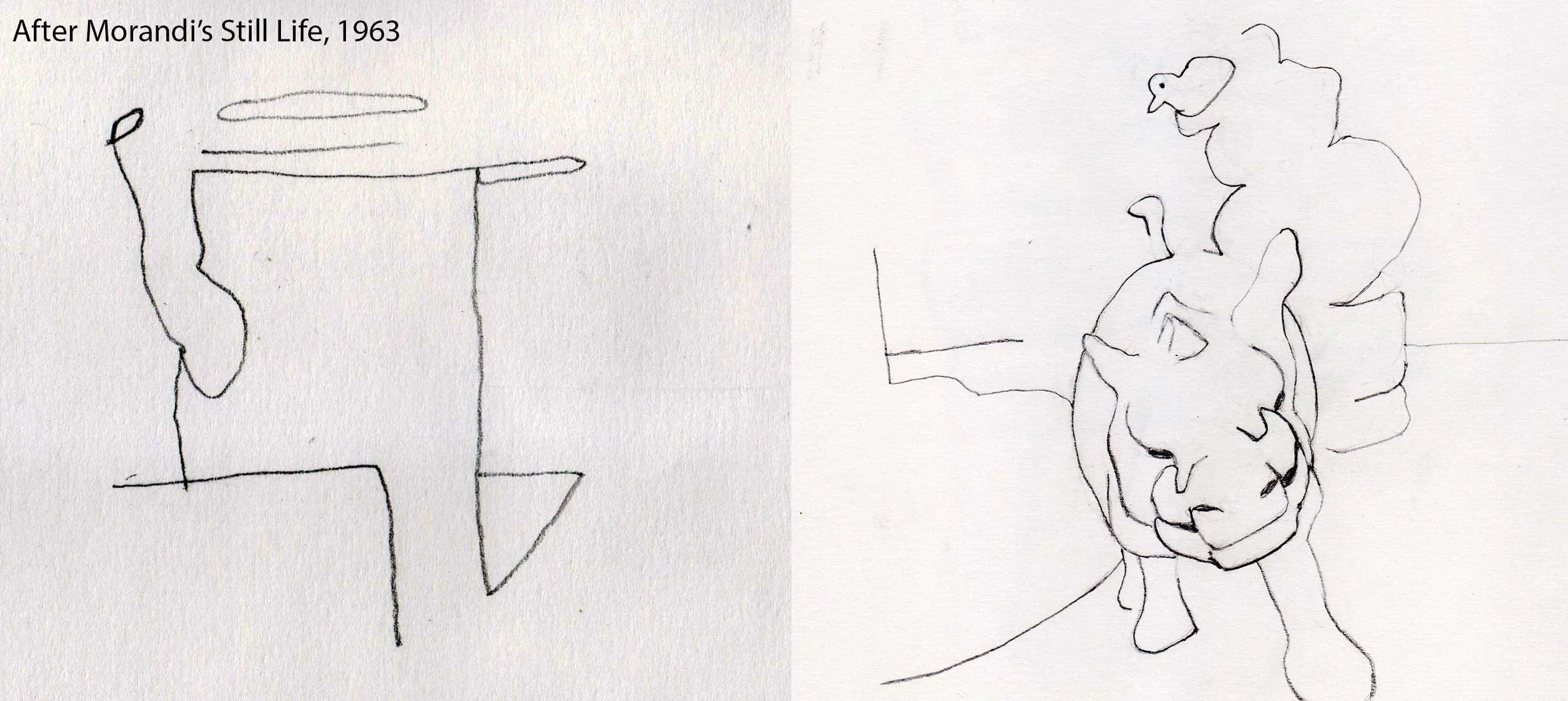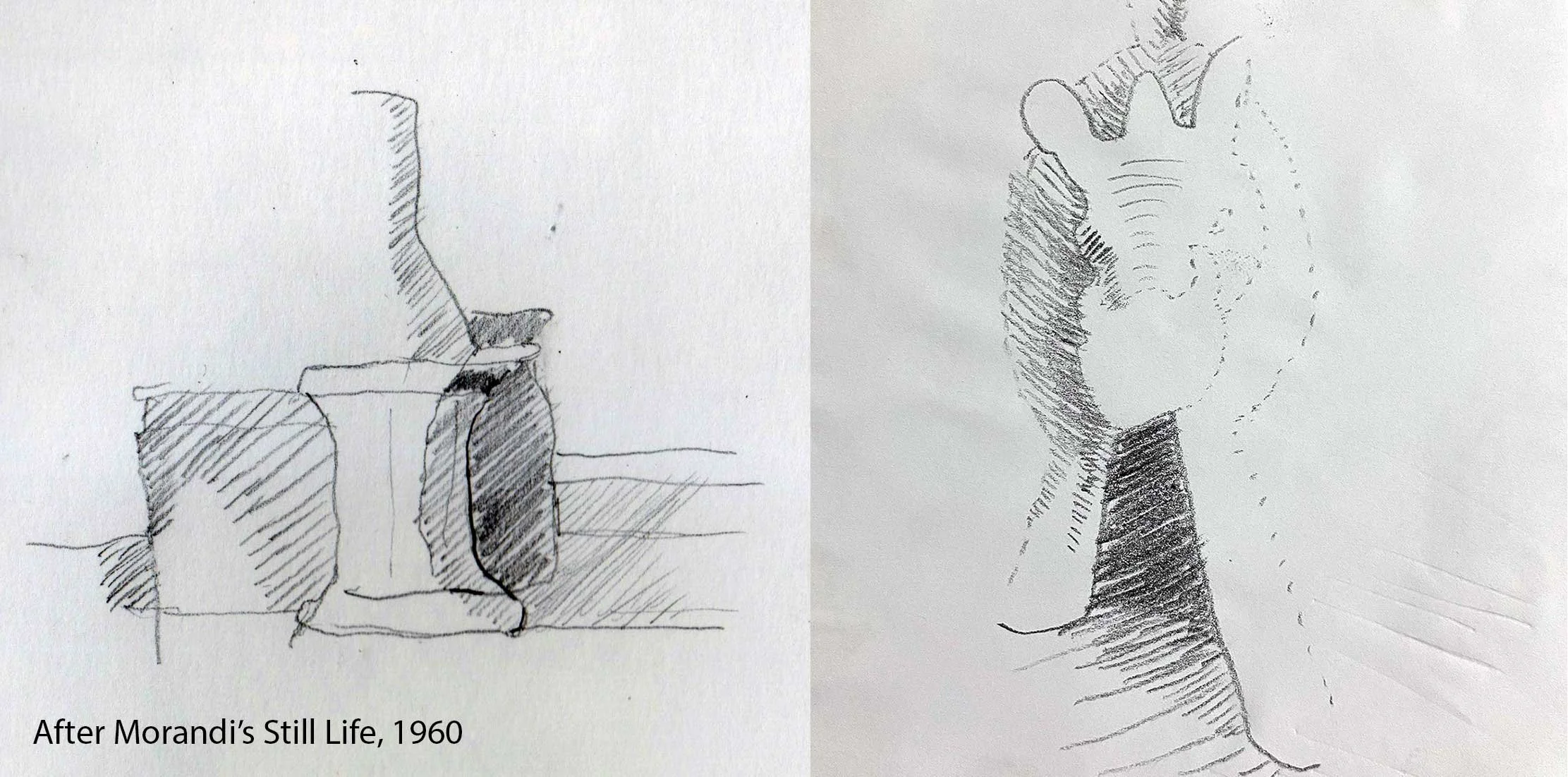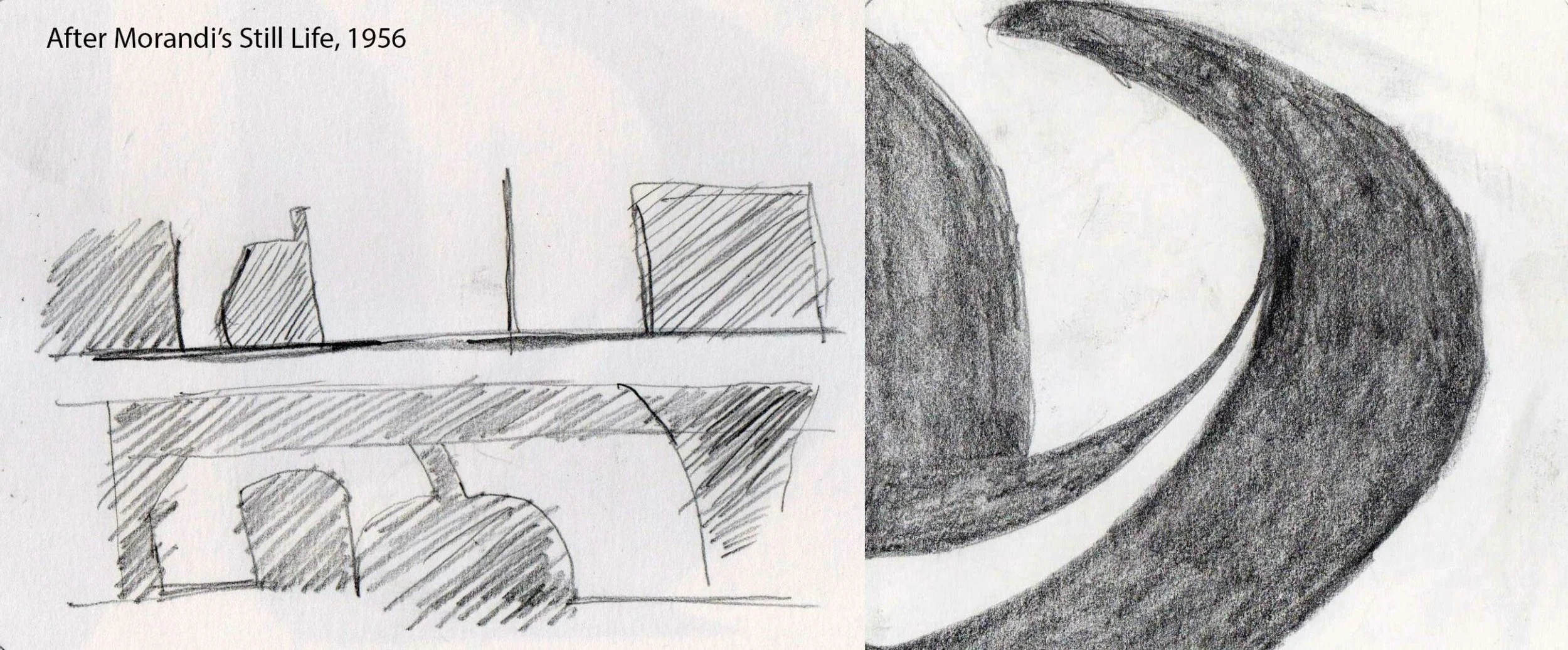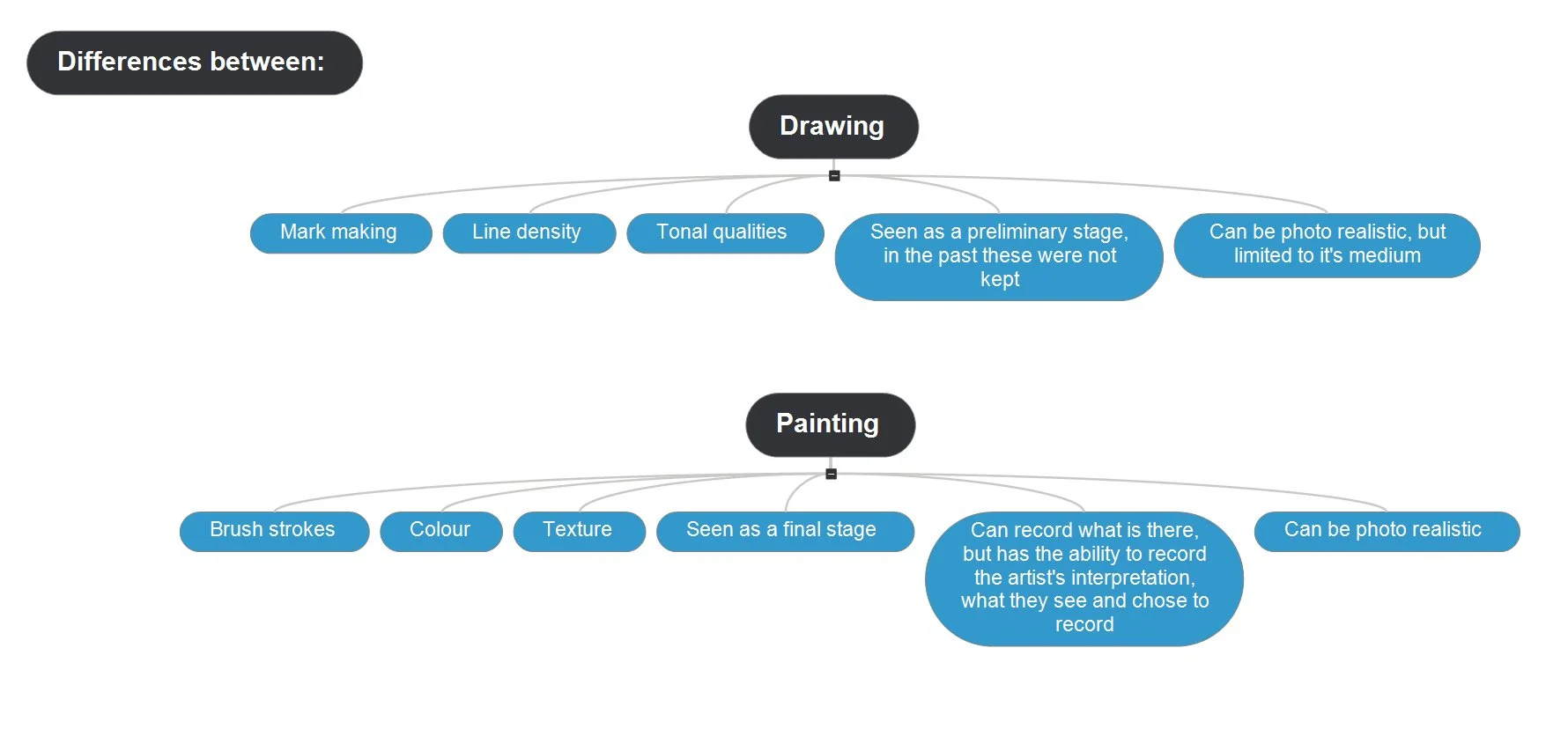How to Draw Like Paula Rego
Having stumbled across this on the tate website, I now have a greater understanding of the thought processes of how Rego create her large work in multiple layers of pastel and I'm inspired to try myslef using a still life, just like Katy Papineau did in the video on the tate website.
https://www.tate.org.uk/art/artists/paula-rego-1823/how-draw-paula-rego
Week 3 Reflections: Encountering the Figure
Further research on portraits has led me to explore an image from Kollwitz's in printmaking and, through entropy, have created slightly different copies of her image. This accidental mark-making has fascinated me and helped drive my current practice. In the past, I've done blindfolded touch drawings and learned that the act of drawing rather than the drawing itself merits its worth. Abstraction forces the viewer and the maker to question their preconceptions of what the depicted should look like. Source images can be found here:https://www.moma.org/s/ge/collection_ge/artist/artist_id-3201_role-1_sov_page-23.html
Source images can be found here:https://www.moma.org/s/ge/collection_ge/artist/artist_id-3201_role-1_sov_page-23.html
Week 2 Reflections: Encountering the Figure - Rubens
Having read the introduction to the Lines of Thought Exhibition Catalog (I was lucky to see it a few years back), I was intrigued by Rueben's stance on drawing from drawings, that he would not take true copies and make his versions better than the originals. When you consider making copies in the past was a form of training actively employed by the then Academy, it's a trait that is still in use today, where artists hire studio assistants to mimic their style on a large scale. Even in art school myself, we were tasked with copying an artist and then, crucially, generating artwork in that style. The last bit is essential here, impersonating as a mechanism to develop your ideas. I went to the British Museum, and the perspective I gained from drawing from Reuben's work was inspirational. You can see the work's scale and tend to look more closely at them as you wrap your head around how old the drawings are. Rubén’s drawings are an excellent example of what Friedlander describes as ‘thinking aloud’ (p12, Lines of Thought Exhibition Catalog ) where you can see the artist's stream of consciousness in working out poses and compositions. These drawings can be seen as observational or conceptual studies, as some may lead to further works of art, others as sketchbook studies etc.Ruebens multiple studies that I copied could also be perceived as a brainstorming session where the artist is simply expressing and testing their ideas on paper, which you would associate with sketchbook work. Kept for the artist’s enjoyment and a record of ideas for future brainstorming, not for the public to see and stored away. Or it is seen as a preparatory drawing where the art historian has identified these images in Rueben's finished artworks, making them more valuable. Many initial sketches did not survive; they either became occluded behind final paintings or destroyed over time as they were not deemed valuable by the artist. 
Week 2 Reflections: Encountering the Figure
The tracing the images task was helpful as it got me thinking about the size and media the artists used. A couple of my attempts did not go to plan due to the wrong type of paper. Still, they did lead to some interesting images, for instance, Peyton's image of Diana in a swimming suit on a crinkled paper, as I used too much-wet media without stretching the paper, which brought on connotations of this fleeting moment, a polaroid capture that also had an accidental dip in a pool and then dried out in the sun feels to it.Overall, I have a greater understanding and respect for these simplified images; as researching the artists, I have found that to do these more abstract images, the artist had spent many years doing traditional figure representations first.The scale research helped a lot, and I did certain parts of the image at the actual scale to focus more on applying the media in style like the original image. Making copies of the work has given me an insight into how these various interpreted their ideas and communicated through mark-making. How you could feel the harrowing narrative that Käthe Kollwitz recorded in her image to the energy captured in Reubens's fast preparatory drawings. 
Week 2 Reflections: Encountering the Figure Copies
clothing reflections
Clothing in my selected drawings obscures the form and is used for narrative mainly, describing where the image takes place, from a field to a swimming pool. Most do not have too much background visible, so the clothing sets the narrative. The images also featured stylised and traditional nudes, and the lack of clothes is more jarring in some of these. For instance, Moore's seated figure does not show a glamorous, sexy model; it's like his sculpture, a 3d study of a human figure. It does show his style of thinking in 3D; he's playing with light, space and volume. It's an elongated non-representational image with the viewer looking up at a female or male figure. Because it's a simple charcoal drawing with a background, this is a sketchbook idea, not a preparatory drawing leading to a final image. If you look at Leonardo's image, for instance, he tended to use this life study poses in multiple final images.
Week 1 Reflections: Encountering the Figure Tracings
Week 1 of the Encountering the Figure Project was to trace 12 artworks and reflect on the mediums used to create them and to start thinking about what the artist intended when they created the images. I have explored lots of different mediums this week and it was interesting to see how the wet media reacted to the tracing paper. For instance, Peyton's image ( above) using charcoal paint made the tracing paper crease up. As if the drawing had been swimming with the very subject! Would like to explore more media next week when I start copying these images using thicker paper rather than tracing paper.
Reflections on Morandi Project: 30 days daily drawing
Morandi seems to have this very graphic style, where you can see the outlines of his objects which feature sharp contrast.I surprised myself, as I thought i would become bored with the limited still life subject. It made me think outside the box more, and started to have fun looking at different angles and ways to express the simple shapes. On reflecting on my daily drawings, I found once I let go and started looking at either shape, tone or linework i created more fluid and organic shapes. I struggled with the linework in week 4, but feel if I explored it using printmaking I might enjoy it more.Going forward i would like to look at doing drypoint or etchings for more Morandi inspired still lifes.I would also like to look at how Morandi used colour, by studying his watercolour and oil paintings.
Week 4 Reflections: A drawing a Day
Started working in pen to capture surface detail with the thickness of line. Morandi had great patience, with this and I was also my comfort zone on this trying to be more expressive with mark making rather than blending. Ongoing Goals: continue to look at negative space within the compositions, would like to recreate one of Morandi's watercolour still lifes to introduce colour. Would also like to explore his linework through drypoint or hard etching.

Week 3 Reflections: A drawing a Day
Have gone back to tonal studies with Morandi and trying to be more expressive with my mark making. Enjoyed working up the density with an eraser and trying to be more descriptive with composition.Goals for week 4: continue to look at different perspectives use the eraser more and look at negative space within the compositions.
Week 2 Reflections: A drawing a Day
Second week of morandi studies, have started to look at 2 or 3 objects in my still life drawings. I'm inspired by morandi's use of form using incomplete lines to describe depth and shape. I can start to see interesting shapes formed with spaces not filled in and be more abstract with my compositions. Goals for week 3: continue to explore mark making and this abstraction where the objects are reduced to shapes. As Morandi is drawing not to record accurate dimensions, he's playfully exploring the descriptive relationship to reality and what are perceptions of real are. 
Research Point: Morandi
Do some research into Giorgio Morandi’s life and work.Mindmap info Source:Güse, E. and Morat, F. (2011) Giorgio Morandi. Second Edition. London:Prestel.
Week 1 Reflections 2: A drawing a Day
This Morandi drawing (Still Life 1960) inspires me, as tone and line has been used to create an exciting composition. The mark making does not give the object's form or describe photorealistic tonal qualities, like you would find in a classical work where it would be applied to create a 3d representation of the object in 2D. Morandi is playing with the same angular stroke to create interesting designs. With the incomplete lines suggesting at negative merging with the object's space. This is a flat 2D interpretation.In response to this, I have started to look at a smaller scale, and what to not draw in relation to negative and positive space. My style is usually quite fast with a continuous line to describe, before going in with tone. This has been challenging to do, by not doing a continuous outline of the warthog. I compromised, by doing very faint lines and dots in some areas. I did enjoy only filling in some of the background. Goals for week 2: look at different perspectives of the still life (e.g. high, low), continue not doing full outlines and look at how to communicate background though mark making.
Week 1 Reflections: A drawing a Day
First morandi studies, looking at his drawings have revealed that his Still Life's contain common everyday objects such as bottles and bowls. He plays on negative and positive space, reducing the objects to interesting shapes using strong lighting to create his compositions.
Having started to look at just bits of my still life object enlarged, I can start to see interesting shapes formed with negative spaces.
Goals for week 2: use more than one object in my still life setup and explore scale and mark making more.

Research Point: What are the Differences and Similarities between these 3 mediums:
First research task for part 1 - looking at 3 mediums: drawing, painting and photography and getting my head around using mind maps.
Write a list of similarities and differences between the acts of drawing (or painting) and photography. Think about how they are used to make images and what can happen during that making process.


Just get a sketchbook out: top UK artists lament decline of drawing classes - Article in The Guardian May 2021
Skill regarded as vital by Peter Blake, David Hockney and others has today been eclipsed by conceptual art
The Observer, Dayla Alberge, 09/05/21
featured image: British artist Sir Peter Blake says he tried to get Royal Academy Schools students to draw, without success. Photograph: Shaun Curry/AFP/Getty Images
https://www.theguardian.com/artanddesign/2021/may/09/just-get-a-sketchbook-out-top-uk-artists-lament-decline-of-drawing-classes [accessed 18th may 2021]
Interesting read about the state of the UK art system and these stereotypes of if you can draw you must be an illustrator....
Late Period: Battle by Peter Blake, his largest single picture to date. Photograph: Peter Blake





